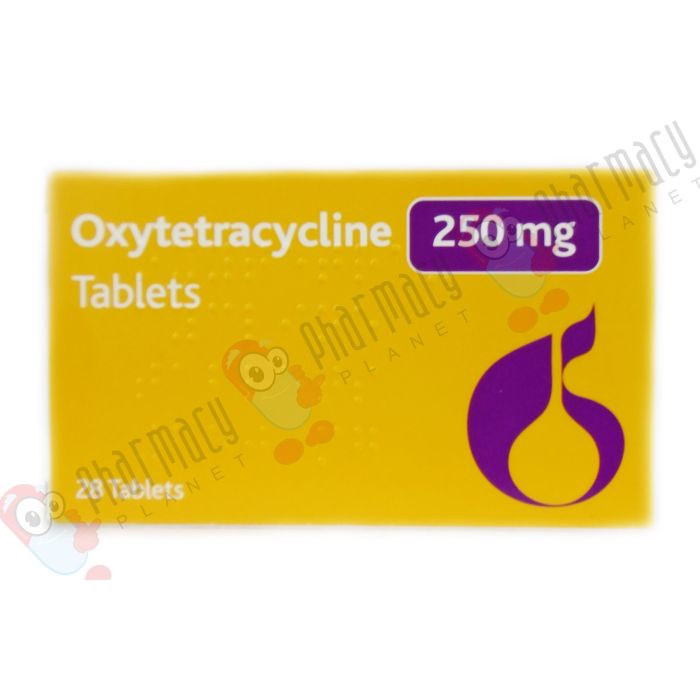Oxytetracycline is an oral, anti-inflammatory antibiotic used in the process of treating acne, rosacea and other bacterial infections, making it a wide-spectrum and effective antibiotic against a large number of bacteria. Oxytetracycline can also be used for skin infections, urine and genital infections, chest infections, yeast infections and mouth infections.
This is used for the treatment of adults aged 18 to 65 years and it comes in doses on 250mg tablets in packs from 112, 224 and 336.
the items you wish
to order

by our qualified
prescriber
to your door step
Please use the options provided to make your final selection.

| Brand | Medicine Strength | Size | Price |
|---|---|---|---|
| - | 250mg | 112 Tablets (1 month) | 42.00 |
| - | 250mg | 224 Tablets (2 month) | 69.00 |
| - | 250mg | 336 Tablets (3 month) | 98.00 |
It looks like you missed filling in questions from the last consultation.Click Here to submit your response.


It is the prescribers duty to ensure that the medicine is being used safely and appropriately. please answer a few questions about yourself to help us process your request.
Customer Service Team
Confidentiality & Authenticity Assured
- Fully Regulated UK Pharmacy
- Authentic UK sourced medicines only.
- Trading for more than 10 years.
- Information Governance lead ensures all data is confidential
Need Help With Your Questionnaire?
Our customer service team is on hand Monday-Friday to help you with your queries.
Please call us on 08009788956 or
email us at: headoffice@pharmacyplanet.com
Nearly ThereA few more questions to ensure the treatment you are requesting is right for you. |
|
|
|
|
|
|
|
|
|
|
|
|
|
|
|
|
|
|
|
|
|
|
|
|
|
You must confirm your understanding of the above to move forward with your order |
|
|
|
|
|
|
|
|
|
|
|
|
Oxytetracycline is an oral, anti-inflammatory antibiotic used in the process of treating acne, rosacea and other bacterial infections.
People also ask
What is Oxytetracycline?
Oxytetracycline dihydrate, an active ingredient that targets bacteria known as propionibacterium acnes, is associated with acne infections.
How does it work?
What are the benefits of taking it?
As well as being an effective aid in treating acne, the medicine being in a tablet form makes it much easier to take as opposed to a topical cream, gel or ointment. Clinically, it is extremely favoured amongst a majority of patients who are able to notice a substantial difference with their skin when using Oxytetracycline tablets instead of over the counter medicines.
Oxytetracycline is also praised for its very few side affects for both men and women in comparison to other prescription acne treatments.
How do I use it and its dosage?
The tablets are for oral administration and are best taken on an empty stomach (1 hour before food or two hours after). If gastric irritation occurs
Side effects & precautions
Rare or very rare: Agranulocytosis, aplastic anaemia, nephritis, renal impairment.
Frequency not known: Gastrointestinal discomfort, toxic epidermal necrolysis
Please refer to the patient information leaflet to see further side effects.










